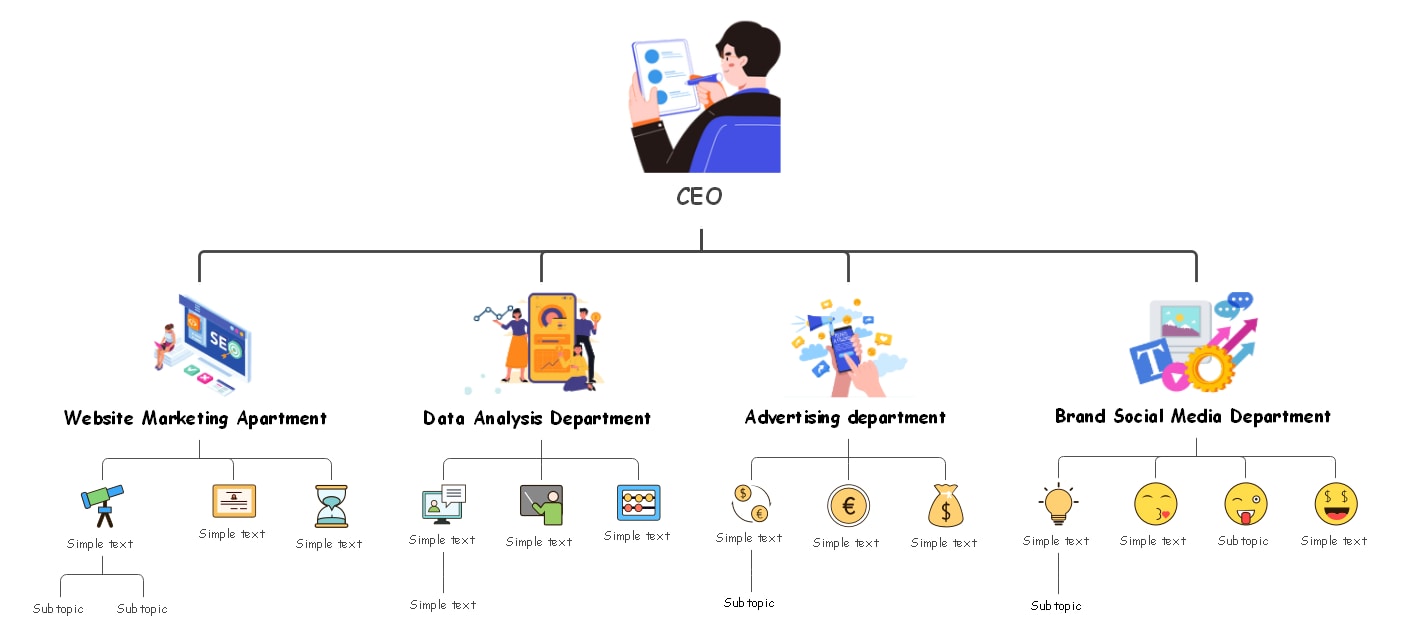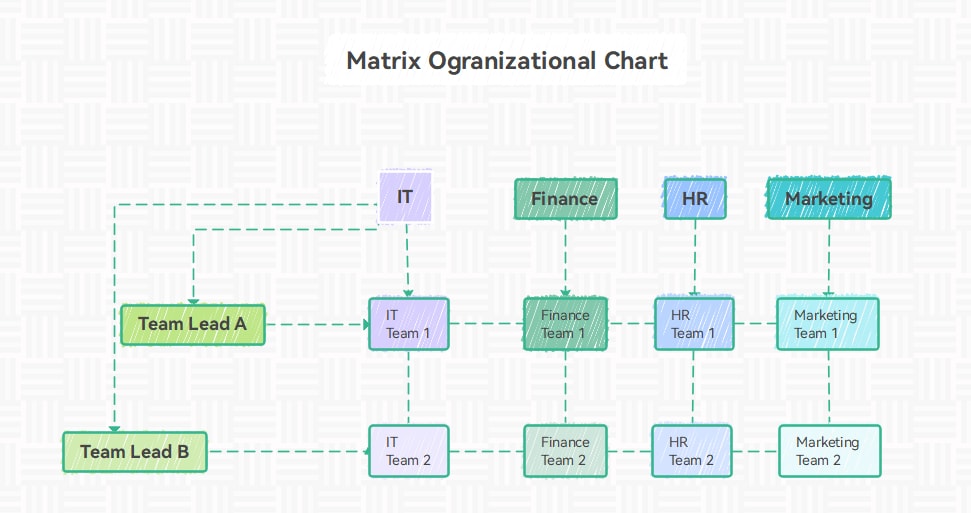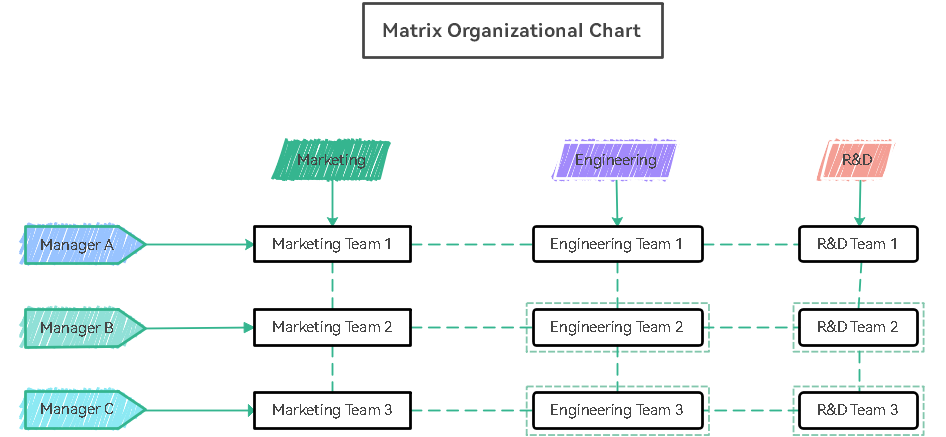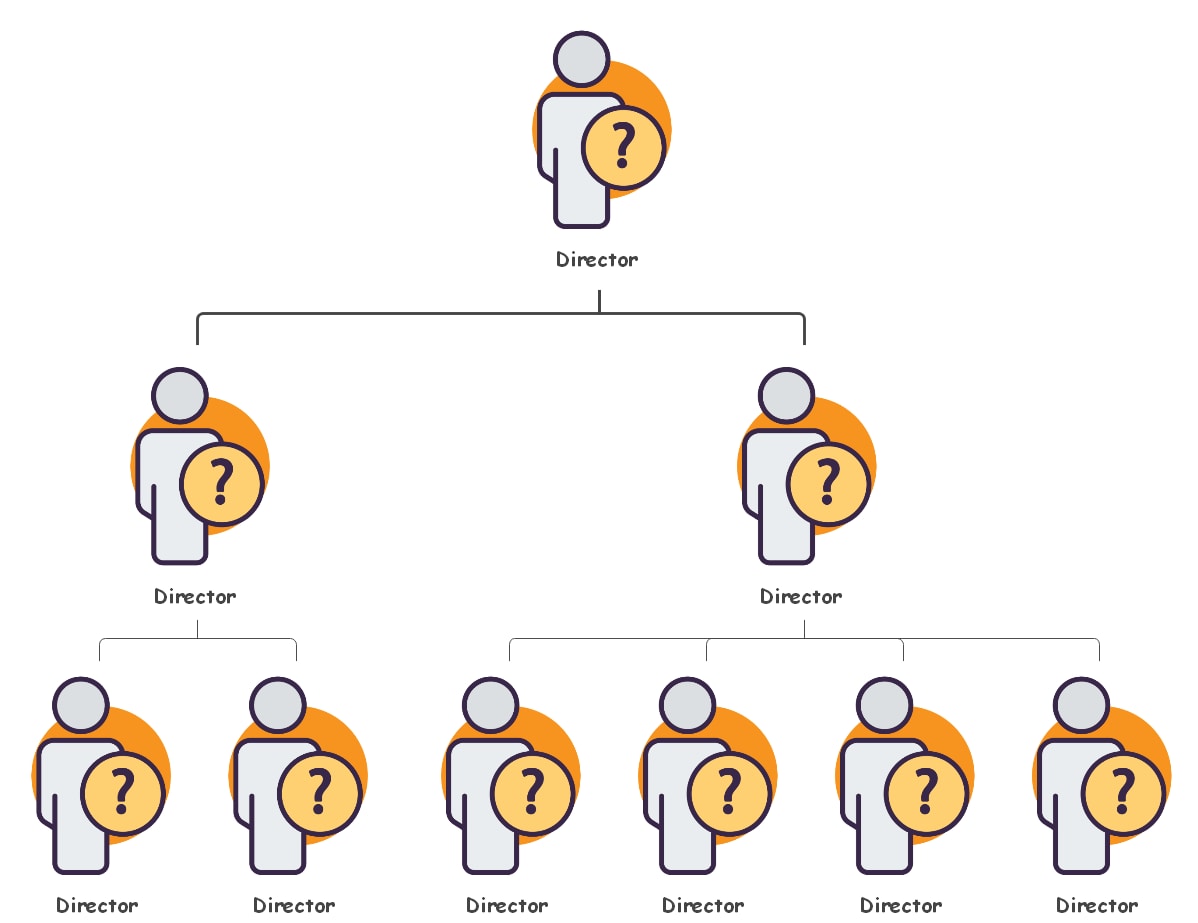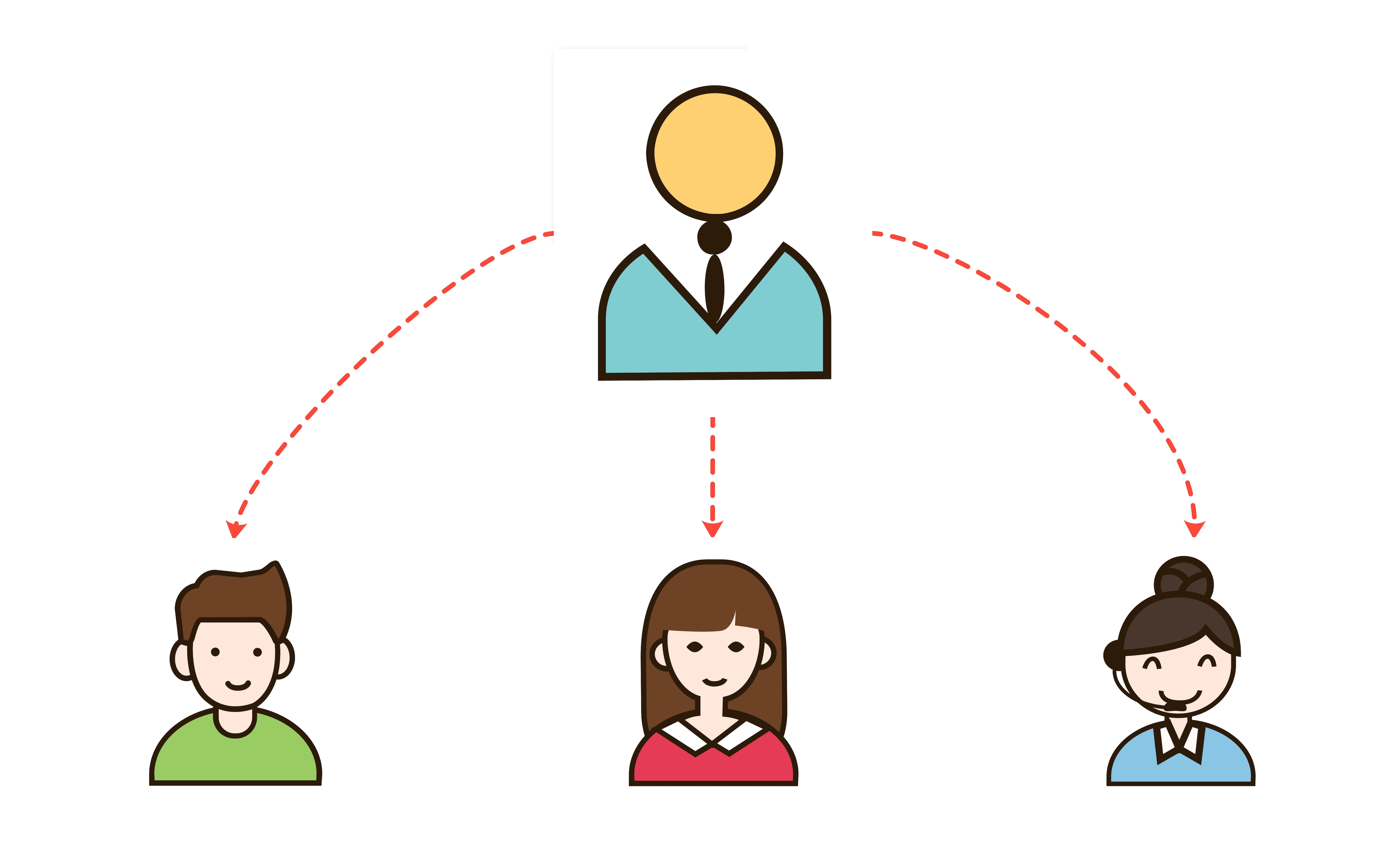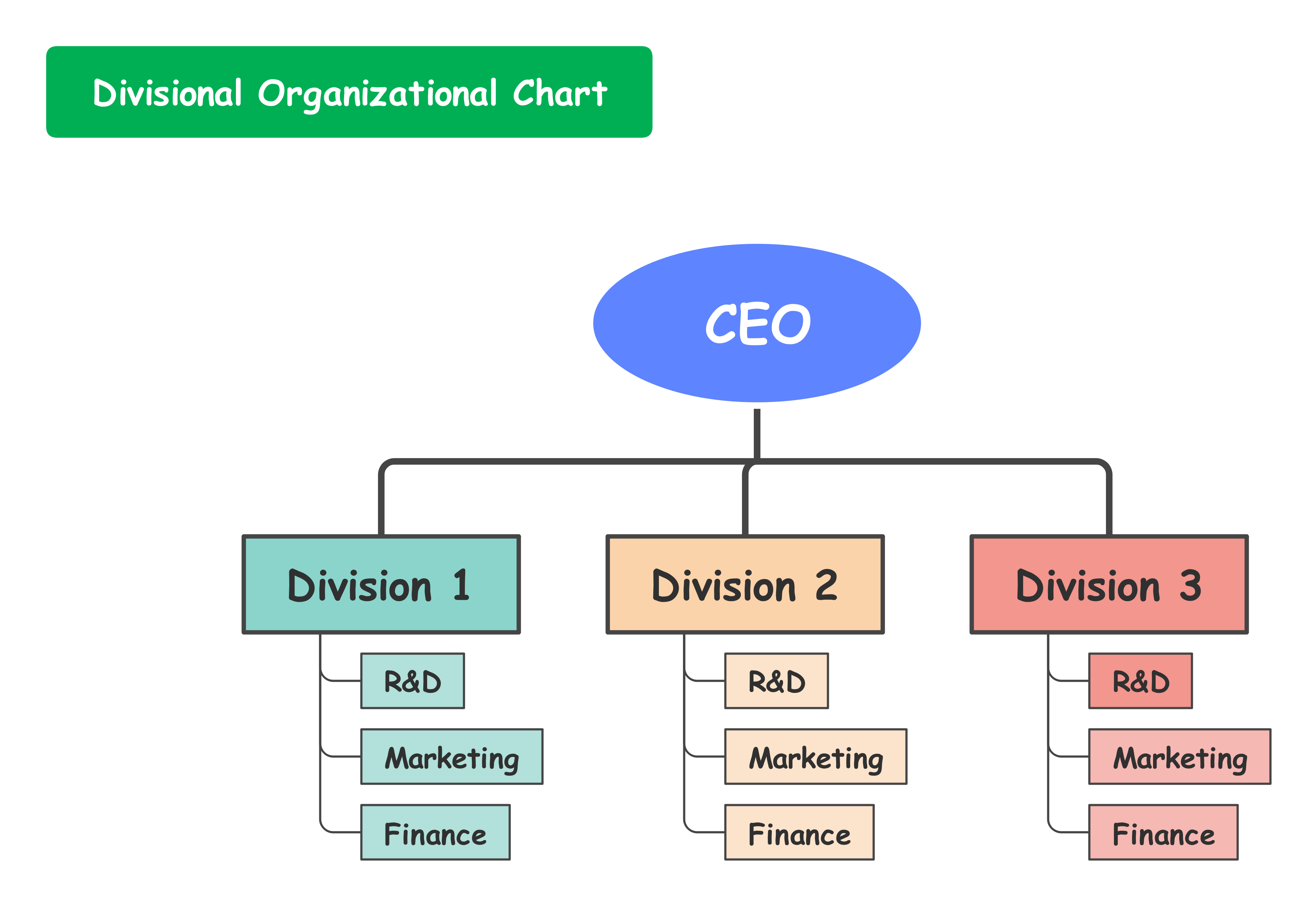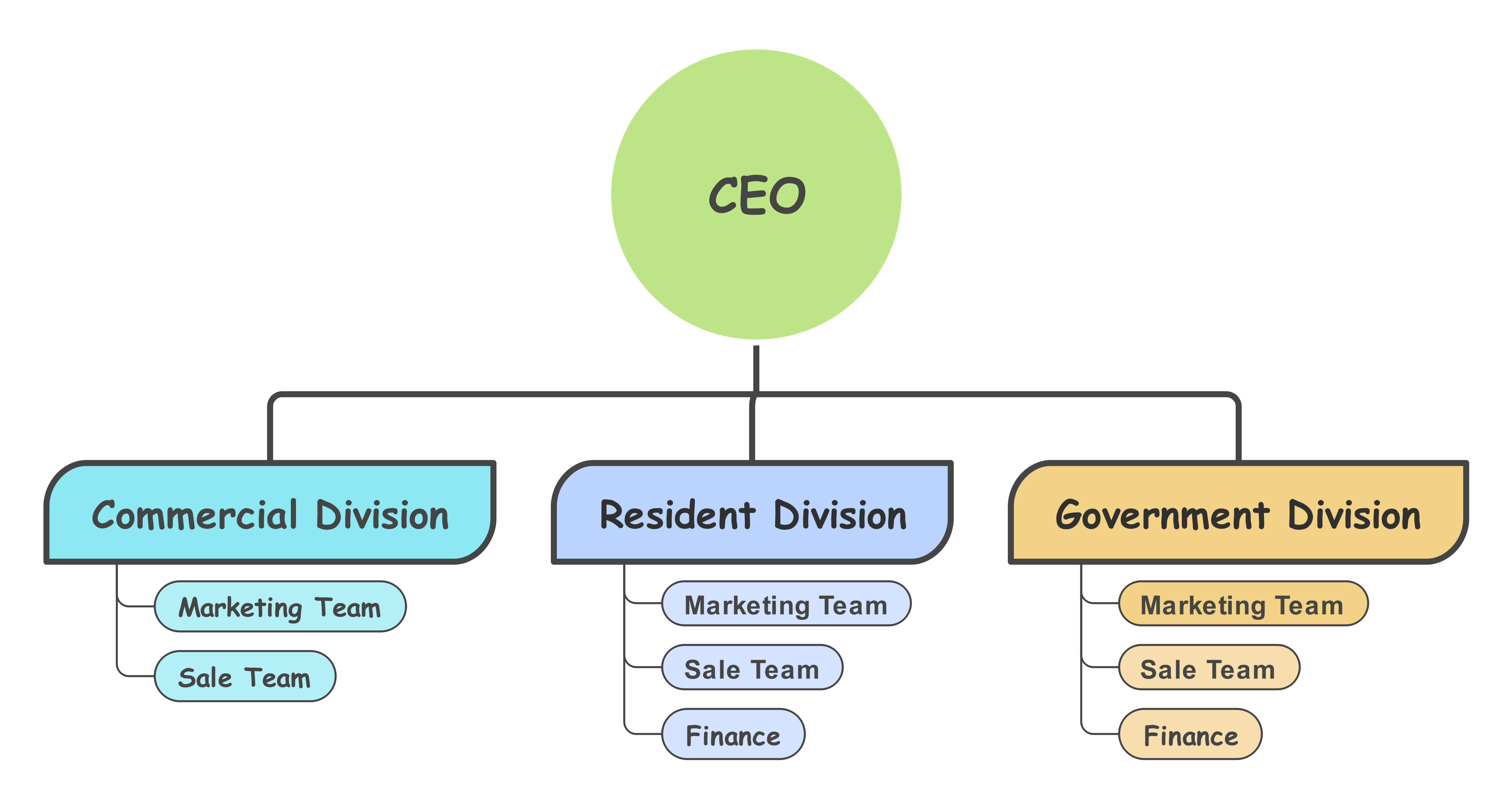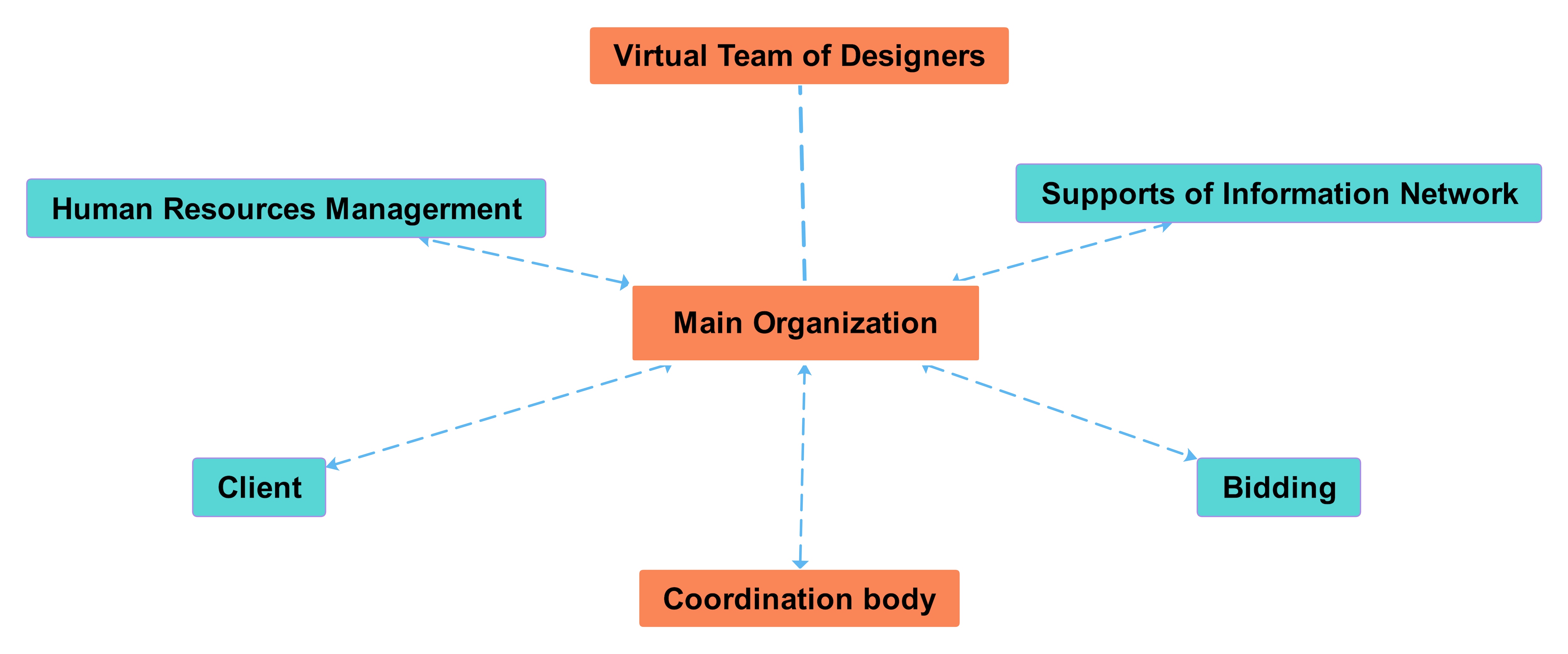In modern businesses, organizational structures are super useful as they serve as the blueprints that define how tasks are divided, authority is wielded, and communication flows. In this elaborated article, we will introduce organizational chart templates and examples provided by EdrawMind to understand org chart structures.
We will discuss how easy and efficient it is to create an organizational chart structure with built-in templates. However, before we learn the steps, let's discuss in-depth the different types of organizational structure, their benefits, and limitations.

Free Organizational Chart Examples & Templates
Over the last couple of years, human resource teams have realized that the traditional hierarchical org chart structure is insufficient to describe certain necessities. Hence, a few more organizational chart structures came into play.
1. Traditional Hierarchical Organizational Chart:
As the name suggests, the traditional hierarchical organizational chart embodies the classic pyramid structure, with a single leader or CEO at the top. Followed by various levels of employees beneath them. Such a traditional hierarchical organizational chart visually represents the chain of command and decision-making process.
Benefits:
- It provides clear reporting lines and well-defined roles.
- Companies can find efficient decision-making due to a centralized authority.
- Such org chart structures delineate career progression.
Limitations:
- There is limited flexibility in adapting to changes.
- Since the communication is passed from one level to another, it may lead to communication bottlenecks.
- Most companies have noticed that a hierarchical structure may stifle innovation among their employees.
Hierarchical Organizational Chart Template 1:
There is a CEO at the top of the funnel who gets reports from the Marketing Team, HR Team, Administration Team, and such. Each of these departments has their respective teams who report back to them. The departments have clear transparency, and everyone is aware of their roles and responsibilities.
Hierarchical Organizational Chart Template 2:
In this traditional hierarchical organizational chart template, you find how different departments, like the Website/Marketing Department, Data Analysis Department, Advertising Department, and more, report to the CEO. Additionally, each of these departments has its own hierarchy.
2. Matrix Organizational Chart:
The matrix organizational chart follows a convenient dual reporting structure, where employees report to both functional and project managers. It enhances cross-functional collaboration and resource utilization within large organizations.
Pros:
- It helps in efficient resource allocation.
- Enhanced communication across departments because of cross-functional collaboration.
- There is flexibility in adapting to changing project demands.
Cons:
- Dual managers may lead to potential conflicts.
- New joiners may get confused due to the complex reporting relationships.
- The matrix org chart structures require strong coordination and communication.
Matrix Organizational Chart Template 1:
As shown in the following matrix organizational chart template, there are two team leads, A & B. They both are handling a bunch of team members, and in return, the employees from Team 1 and Team 2 are both reporting to Team Lead A and Team Lead B. This way, both team leads can efficiently allocate all the required resources.
Matrix Organizational Chart Template 2:
Here we have a total of three different managers who are handling multiple departments, like Marketing, Engineering, and R&D. All of these departments are connected with different teams of different managers and are sharing the data for improved productivity.
3. Flat Organizational Chart
A flat organizational chart fosters a collaborative and open work environment, encouraging direct communication between employees, management, and their reporting officers.
Advantages:
- Since there is a very limited or sometimes no hierarchical level, employees can reach a decision much faster.
- A flat org chart structure promotes employee empowerment and autonomy.
- It helps reduce bureaucracy and streamline communication between the company's heads and employees.
Disadvantages:
- Limited opportunities for career advancement.
- Since there are no managers or heads of departments in a flat org chart structure, it somehow overburdens the top-level managers.
- The lack of a clear hierarchy may lead to role ambiguity.
Flat Organizational Chart Template 1:
Here, there is one director, who has one manager and one commercial director. However, there is no such hierarchical system between them and the rest of the employees. By adhering to the rules of the flat org structure, you can analyze how convenient it is for the team members to communicate with the director.
Flat Organizational Chart Template 2:
In the following flat organizational structure template, we have one director or head of any department, and different team leaders directly report to him. Since no mediator or management exists between the director and the employee, employees can have better collaboration and effective communication.
4. Divisional Organizational Chart
A divisional organizational chart visually illustrates employees or teams based on specific products, projects, or geographic regions. Under this org chart structure, each division operates independently, allowing for specialization and focused management.
Benefits:
- It provides efficient management of diverse business units.
- Since there are different divisions for different projects, it helps in better alignment with unique market needs.
- Multiple divisions encourage innovation within divisions.
Challenges:
- A lack of hierarchy leads to duplication of resources across divisions.
- It may lead to an inter-divisional competition.
- There may be complex coordination and communication.
Divisional Organizational Chart Template 1:
Here, there is one CEO who has divided their company into three divisions. Each of these divisions has its respective team members, who report back to their heads. Contrary to other org charts, divisional has similar streams under each division, which helps ensure the team stays focused and works on their individual product or service line.
Divisional Organizational Chart Template 2:
In this divisional organizational chart template, we have one CEO, and under them, they have divisions, like the Commercial Division, the Resident Division, and the Government Division.
As you can see from this org chart example, each division has similar teams. This way, the Commercial Division will focus on its respective product line, and so are the Resident Divisions and Government Divisions.
5. Virtual Organizational Chart
A virtual organizational chart represents a network of individuals collaborating remotely, often in a project-based or temporary capacity. With this structure, companies can easily leverage technology to connect a geographically dispersed workforce.
Advantages:
- With a remote team, one can easily access diverse talent worldwide.
- Reduces overhead costs associated with physical offices.
- With virtual org charts, companies can scale operations up or down.
Disadvantages:
- Most companies find establishing strong team cohesion challenging.
- Remote organs have encountered communication barriers due to geographical dispersion.
- Potential for time zone differences affecting productivity, resulting in a loss of overall productivity.
Virtual Organizational Chart Template 1:
In the following virtual organizational chart example, Core Competence A and B have their own virtual team. In such a detailed org chart, you will find how these core competencies have their respective alliance partners and how easy and productive the overall communication is between the virtual team.
Virtual Organizational Chart Template 2:
In the virtual organizational chart template below, we have one Main Organization in the center, and different virtual departments are spread like a mind map. With tools like EdrawMind, you can easily customize such virtual org chart templates and add detailed employee details or department information as and where it is required.
How to Use Organizational Chart Templates?
Check out the following steps and create your organizational chart with EdrawMind in just a few minutes:
Step 1Install EdrawMind
The first step you need to take here is to download EdrawMind as per your operating system. Once installed, you will register using your official email address.
On the home screen, you will find the 'Org Chart' diagram type. Click on it to get started.
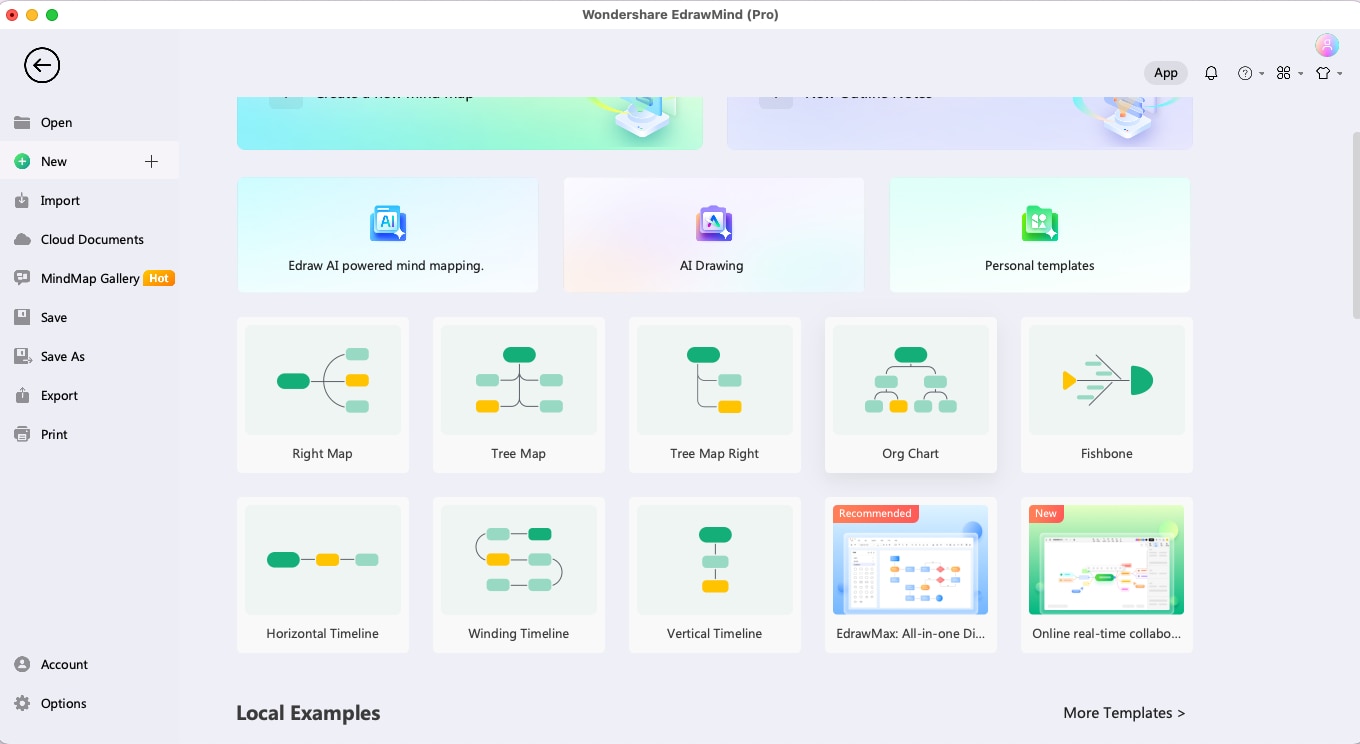
Step 2Download the Template
If you are interested in any of the above org chart templates, click on the download button next to them and the *.emmx file will be downloaded in your system.
Step 3Open the Template
From the home screen, click 'Open' to open the downloaded org chart template from your system.
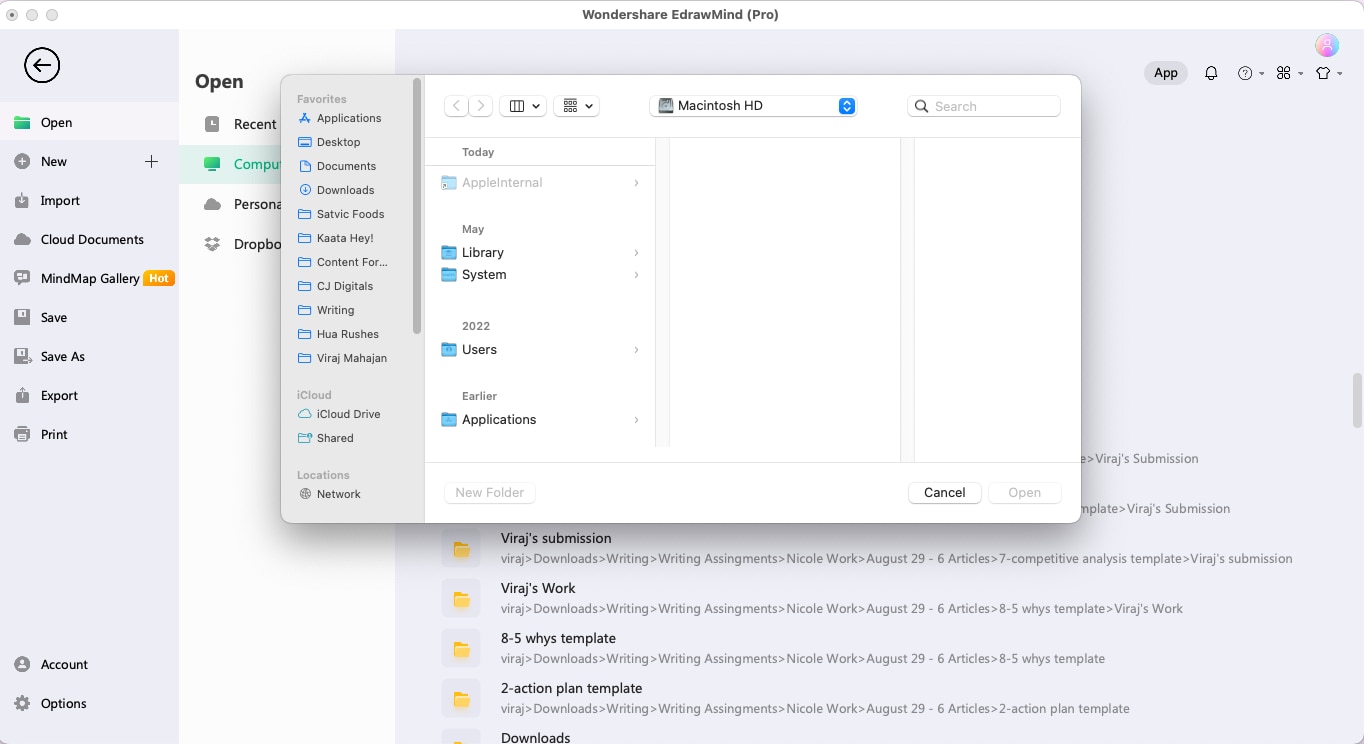
Step 4Customize the template
Click on any segment, and you will find a pop-up. You can customize the layout and branch or even change the connector from here.
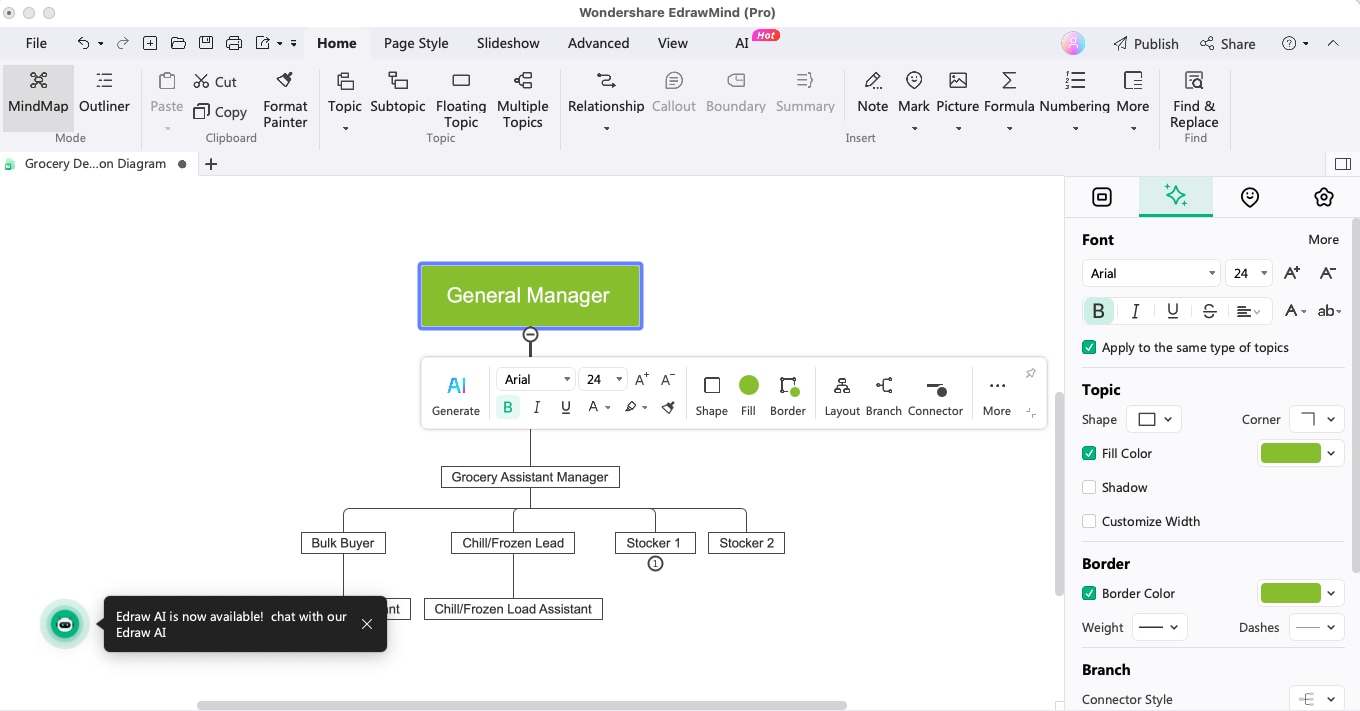
Step 5Save & Export
After finishing up the customization to your org chart template, you can save or export it in different formats, like JPEG, PNG, HTML, PDF, and MindManager.
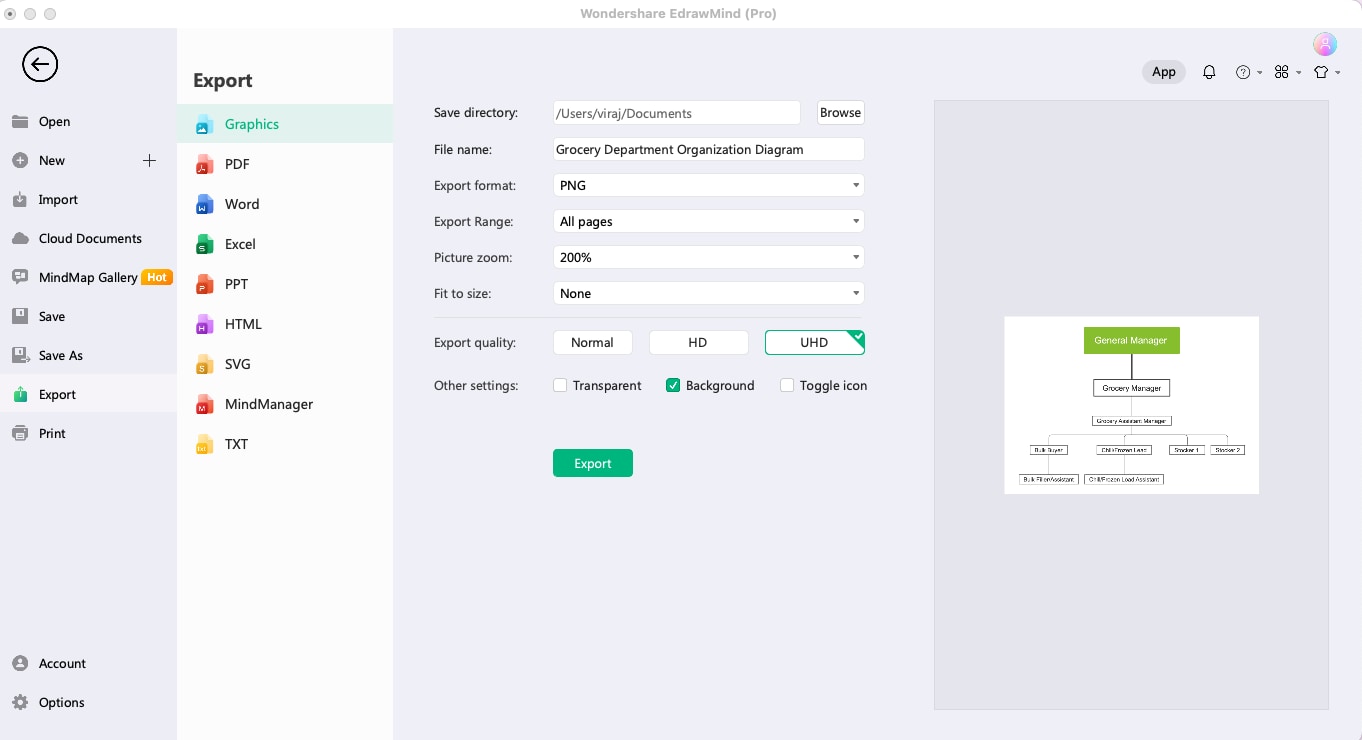
Free Organizational Chart Maker
EdrawMind - This free organizational chart maker also comes with a lot of features, like:
- Template Community: From the 'Mind Map Gallery,' you can find thousands of templates. Easily duplicate the content and start customizing.
- Free Templates: This free organizational chart software comes with free templates.
- Traverse Topics: You can easily navigate through the different branches of your organizational chart.
- Brainstorming: It allows you to quickly share your ideas with your virtual team.
- Edraw AI: EdrawMind now comes with a powerful Edraw AI that helps in AI drawing and also extracting text from any given image.
Conclusion
Organizational charts are invaluable tools for visually illustrating an organization's structure and relationships. Utilizing free organizational chart templates, which come with EdrawMind, streamlines the process of creating these org charts, enabling businesses to focus on optimizing their internal dynamics. Whether embracing the traditional hierarchy, exploring matrix frameworks, adopting a flat structure, implementing divisional units, or engaging a virtual workforce, these organizational chart templates empower organizations to tailor their structures for enhanced efficiency, collaboration, and success.




 below.
below.  below.
below. 